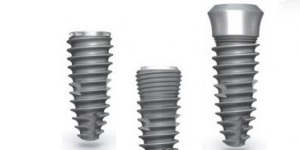
استفاده از انواع دارو در افراد مسن
2015-09-06
dental implants and maxillary
2015-09-06The goal of modern dentistry is to restore the patients mouth to normal function, comfort, esthetics, speech and health, regardless of the disease, injury, or atrophy present within the oral environment. However, the more teeth a patient is missing, the more difficult this goal becomes with traditional dentistry. As a result of continued implant research and the advances in implant techniques, predictable success is now a reality for the rehabilitation of many challenging patient situations. As our population ages this success becomes critically important in order to preserve the health of the population
Life expectancy has increased significantly past the age of retirement. In 1965, the average life span was 65 years, whereas in 1990 it was 78 years. A person 65 years old, can now expect to live 16.7 more years, and one 80 years old can expect to live more than 8 more years. This increased life expectancy has led to increased tooth loss. Currently, 26% of all Americans over the age of 65 have either lost one full arch or have lost all of their teeth. Social pleasures, including dining and dating, are diminished when the teeth are lost
Eventually, the need for additional retention, support, and stability, or the desire to eliminate a removable denture, are common indications for more effective and permanent solutions, such as dental implants. Dental implants, which are man-made tooth root replacements, are also increasingly used to replace a missing single tooth. Like natural tooth roots, they can be used to support permanent types of tooth replacements, or act as anchors for a removable prosthesis to replace teeth (i.e. dentures). Today, this represents the most conservative and most predictable long-term option. Traditional dentistry most often replaces the missing single tooth with a fixed bridge. This is accomplished by grinding away sound tooth structure, and crowning (capping) two or more teeth on each side of the missing tooth and joins them together with the artificial or dummy tooth. This approach increases the risk of decay of the crowned teeth, increases the risk of root canal therapy, and makes oral hygiene difficult to impossible, which in turn increases bacterial plaque retention (the cause of decay and gum disease)






